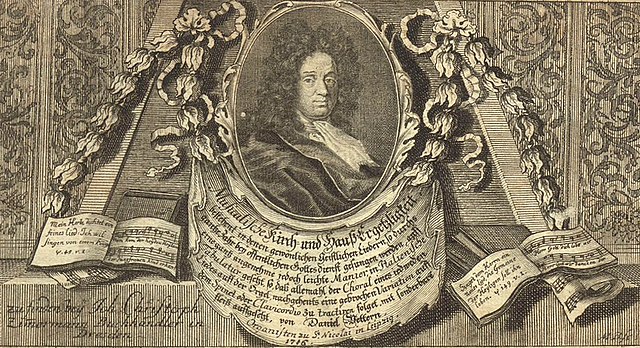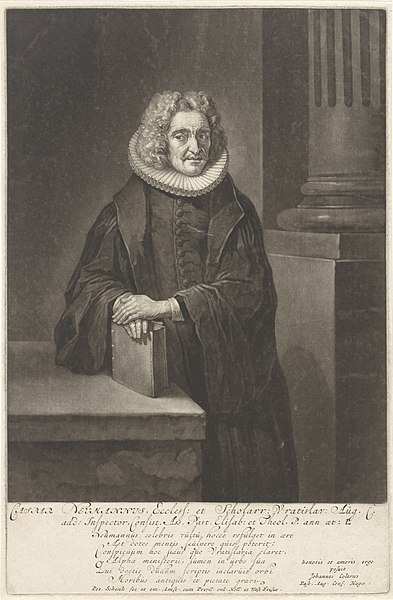Daniel Vetter was an organist and composer of the German Baroque era.
Extract of frontispiece of the first volume of Daniel Vetter's Musicalische Kirch- und Hauß-Ergötzlichkeit (1716 reprint), containing an image of the composer
Daniel Vetter's four-part chorale "Liebster Gott", the final pages of the second volume of his musical anthology, published in 1713
Christmas Carol "Puer natus", No. 15 from Vetter's Musicalische Kirch- und Hauß-Ergötzlichkeit
Variation on "Puer natus", No. 16 from Vetter's collection
Liebster Gott, wann werd ich sterben
"Liebster Gott, wann werd ich sterben" is a Lutheran hymn which Caspar Neumann, an evangelical theologian from Breslau, wrote around 1690. The topic of the hymn, which has five stanzas of eight lines, is a reflection on death. An elaborate analysis of the hymn's content was published in 1749. A few text variants of the hymn originated in the 18th century. Neumann's text is usually sung to the hymn tune of "Freu dich sehr o meine Seele".
St Mary Magdalene Church in Breslau (19th-century drawing)
Caspar Neumann
Last stanza of Neumann's hymn set to the Zahn 6634 melody in the soprano part of BWV 8/6: manuscript used for the première of Bach's chorale cantata in 1724.
BWV 483 in Schemellis Gesangbuch








